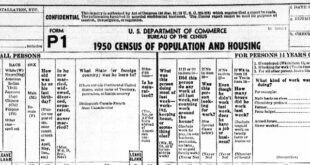Anyone who was born in America can take his citizenship for granted. Many others who were born in Italy and elsewhere and moved to America had to decide whether to become an American citizen or not.
Many Italian immigrants to American 100 years ago presumed they would only stay here long enough to make money to send home, and then return to Italy when they were rich! That dream eluded the vast majority of Italian immigrants, and many settled in American permanently.
At some point, when the reality settled in that they would not return to live in Italy, they decided to apply for American citizenship. Everyone’s reason for deciding this is personal, but many in my family made the decision around the time of World War II when Italian-Americans were viewed by other groups as the enemy. Some of my relatives had been in America 30 to 40 years before deciding to apply. If they had a flag with stars on it in their window, they did not need to prove their patriotism. (My step-grandfather’s parents sent four sons into the service.) If their sons were not of military age, they needed another way to establish their love of this country, so they became citizens once and for all.
For those of us researching our family history, the application papers they filed are a genealogy treasure trove. And more of these papers are going online at Familysearch.org.
A couple of years ago, I wrote a column explaining that the procedure you need to follow is to drive to the National Archives on 75th and Pulaski, go through a series of microfilms of the Soundex Index of Naturalizations. Find the relative and write down all the information in the index. Then have the National Archives find the file from the U.S. District Court naturalizations, or contact the clerk of the court for all other courts such as Superior or Circuit.
You can still do all that if you want.
However, I can tell you about new ways to get the same information, quicker and cheaper. Step one is to go to www.familysearch.org and click “Search.” Then scroll down to the bottom and click “United States.” Then click “Illinois” on the left. Now read the choices to the right. One of the choices is Illinois, Northern District Naturalization Index, 1840-1950.
Now search for your ancestor or relative. It is the same soundex card file you could search using microfilm, but the names are all indexed on this site. If you find the right name, birthdate or address, print out the card because you’ll need the information.
Unfortunately, you cannot link directly to the records. Not all the records are on-line, but here are a few short cuts.
As with the soundex microfilms, you need to take note of the court. Remember that anything that says “U.S. District” court is federal, and the rest of the courts are self-contained. Let’s focus on federal first.
In mid-November, familysearch.org posted images of some of the petition numbers. You can find the ones that are available by looking at the same list of topics on the right side of the “Illinois” list and click Illinois, Northern District Petitions for Naturalization, 1906-1991. Click on “Browse through xxxxxx images.” Then click Cook County. Now look at the number next to “P-” on the index card and it tells you the petition number. As of the time I’m writing this, petition numbers 80000-127999 are on-line. You should check the web site to see if they posted more. Scroll through the list of volumes and find the one that contains the petition number you need. Click on that volume.
Ok now it gets tricky….
It will show you a page number 1 out of oh, 1100 or so. You need to play “higher or lower” and try to guesstimate where your petition is on that volume. If your volume contains 80000-80300 and your petition is 80150, then you need to go about halfway through. So you should change the page number to 550. Then you should go forward one page at a time until you find a page that says “Petition for Naturalization” – at the top of that page, to the far right is the petition number stamped on that page. You might need to jump a few pages left or right to get to your petition. Not every page is a petition. There are other documents in each person’s file, including an Oath of Allegiance, Passenger Record (which is the name of the ship and the date and port, plus the name of the immigrant at the time), the Declaration of Intention, and any paperwork that references the person repatriating back to Italy. In any case, be prepared to scroll through some pages to get to the petition you need.
So what’s in the petition? A lot! The petition for naturalization shows the name, birthdate, birthplace and address, name of the spouse (and maybe her birthdate and birthplace), the name of the ship and date of arrival and the port of arrival. Then the cool part is that it lists the names of the children and birthrates and birthplaces! It doesn’t matter if the children were being naturalized with their father or not. Don’t forget that the naturalization is happening years after they arrived, so there are more children’s birthrates as a result. Look for the naturalization date, and if a child is not listed, it means they were probably born after that date. I have never seen deceased children listed on these forms, however.
I’ll talk about non-federal courts, such as Superior and Circuit Courts, next month.
If you have any questions, send me an e-mail at italianroots@comcast.net and please put “Fra Noi” in the subject line. Have fun!
 Fra Noi Embrace Your Inner Italian
Fra Noi Embrace Your Inner Italian





